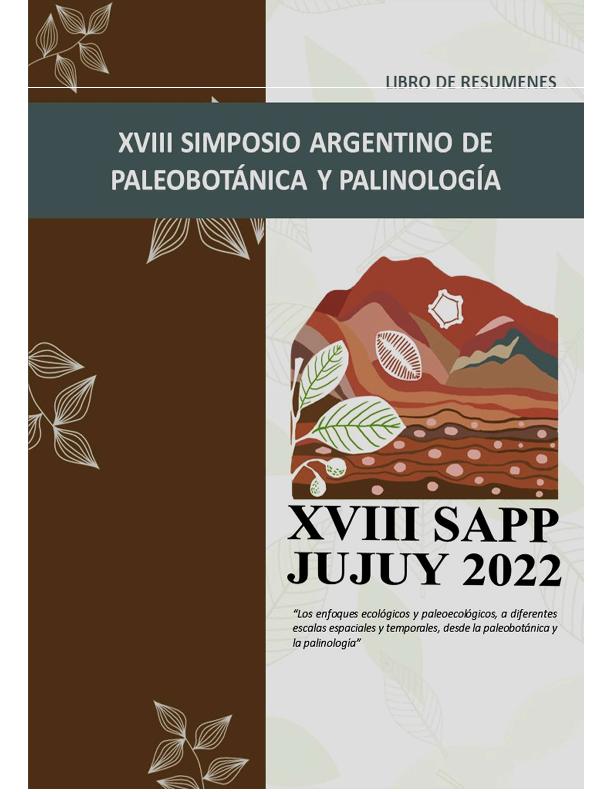Mostrar el registro sencillo del ítem
dc.contributor.author
D`angelo, José Alejandro

dc.date.available
2023-08-07T14:34:41Z
dc.date.issued
2022
dc.identifier.citation
Advantages of feeding on Dicroidium and Johnstonia (Corystospermaceae, Triassic): infrared spectroscopical analysis explains herbivore’s food preferences; XVIII Simposio Argentino de Paleobotánica y Palinología: Los enfoques ecológicos y paleoecológicos diferentes escalas espaciales temporales, desde la paleobotánica y la palinología; Jujuy; Argentina; 2022; 48-49
dc.identifier.issn
0325-0121
dc.identifier.uri
http://hdl.handle.net/11336/207201
dc.description.abstract
This contribution provides the first chemical, biomechanical, and physiological data that help explain the food preferences of herbivores that feed on pinnules of Dicroidium odontopteroides and Johnstonia stelzneriana (Corystospermales, Corystospermaceae). Fossils were collected from two Triassic localities located on the southern side of the Cacheuta Hill (Cacheuta, Mendoza, Argentina): Quebrada del Durazno (upper Potrerillos Formation) and Trinchera La Mary (lower Cacheuta Formation). Some of the studied samples are affected by herbivory, showing external, foliage damage, i.e., traces by hole, surface and marginal feeding, sucking and piercing, and possibly gall. Specimens were chemically analyzed by Fourier Transform Infrared spectroscopy. Chemical data were used to calculate different pinnular properties, i.e., density, tensile strength (resistance to fracture), tensile modulus of elasticity (stiffness), leaf mass per area (metabolic cost of tissue construction), photosynthetic capacity, and maximum rate of Rubisco carboxylase activity (maximum rate at which leaves are able to fix carbon during photosynthesis). Pinnules show an aliphatic-rich composition with organic chemical groups derived from well-preserved and diagenetically resistant polymers, e.g., lignins, tannins, phenylpropanoids, and resin-like compounds. Comparisons with published values of the calculated, aforementioned biomechanical/ physiological properties, obtained for Paleozoic and Mesozoic taxa, indicated that, theoretically, D. odontopteroides and J. stelzneriana had relatively low values of density, resistance to fracture, stiffness, and metabolic costs of tissue construction. This implies that the studied pinnules were likely deciduous, having a short-expected lifespan and a resource-acquisitive leaf strategy that resulted in relatively small, fast-growing, tender, flexible, and cheaply constructed pinnules. On the other hand, they showed relatively high values of photosynthetic capacity and carboxylase activity, resulting in a high production of carbohydrates (nutrients). These characteristics suggest that pinnules of D. odontopteroides and J. stelzneriana may have been a high-quality and attractive food source for herbivores, i.e., “easy to eat and digest” (tender tissues), safe (non-poisonous), palatable (non-astringent), and nutritious (rich in carbohydrates). This case study provides new information on the chemistry, biomechanics, and physiology of the Corystospermaceae with important implications for a better understanding of some plant-animal interactions (e.g., food preferences of herbivores), particularly when the body fossils of the herbivores themselves are absent. Chemical studies will enhance our understanding of the relationship between paleodiets and paleoenvironments, leading to more realistic reconstructions of the complex, food webs of the high-latitude, Gondwanan Triassic ecosystems.
dc.format
application/pdf
dc.language.iso
eng
dc.publisher
Asociación Latinoamericana de Paleobotánica y Palinología
dc.rights
info:eu-repo/semantics/openAccess
dc.rights.uri
https://creativecommons.org/licenses/by-nc-sa/2.5/ar/
dc.subject
FEEDING
dc.subject
DICROIDIUM
dc.subject
JOHNSTONIA
dc.subject
TRIASSIC
dc.subject
FTIR
dc.subject
HERBIVORE’S FOOD PREFERENCES
dc.subject.classification
Paleontología

dc.subject.classification
Ciencias de la Tierra y relacionadas con el Medio Ambiente

dc.subject.classification
CIENCIAS NATURALES Y EXACTAS

dc.title
Advantages of feeding on Dicroidium and Johnstonia (Corystospermaceae, Triassic): infrared spectroscopical analysis explains herbivore’s food preferences
dc.type
info:eu-repo/semantics/publishedVersion
dc.type
info:eu-repo/semantics/conferenceObject
dc.type
info:ar-repo/semantics/documento de conferencia
dc.date.updated
2023-07-28T17:22:34Z
dc.journal.pagination
48-49
dc.journal.pais
Argentina

dc.journal.ciudad
Jujuy
dc.description.fil
Fil: D`angelo, José Alejandro. Consejo Nacional de Investigaciones Científicas y Técnicas. Centro Científico Tecnológico Conicet - Mendoza. Instituto Argentino de Nivología, Glaciología y Ciencias Ambientales. Provincia de Mendoza. Instituto Argentino de Nivología, Glaciología y Ciencias Ambientales. Universidad Nacional de Cuyo. Instituto Argentino de Nivología, Glaciología y Ciencias Ambientales; Argentina. Universidad Nacional de Cuyo. Facultad de Ciencias Exactas y Naturales; Argentina. Cape Breton University; Canadá
dc.relation.alternativeid
info:eu-repo/semantics/altIdentifier/url/http://www.palino.com.ar/alpp/BoletinesALPP/Volumen-ALPP-boletin-2022.pdf
dc.conicet.rol
Autor

dc.coverage
Nacional
dc.type.subtype
Simposio
dc.description.nombreEvento
XVIII Simposio Argentino de Paleobotánica y Palinología: Los enfoques ecológicos y paleoecológicos diferentes escalas espaciales temporales, desde la paleobotánica y la palinología
dc.date.evento
2022-09-28
dc.description.ciudadEvento
Jujuy
dc.description.paisEvento
Argentina

dc.type.publicacion
Journal
dc.description.institucionOrganizadora
Asociación Latinoamericana de Paleobotánica y Palinología
dc.source.revista
Boletín de la Asociación Latinoamericana de Paleobotánica y Palinología
dc.date.eventoHasta
2022-09-30
dc.type
Simposio
Archivos asociados
